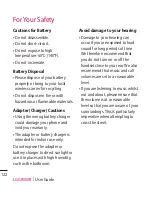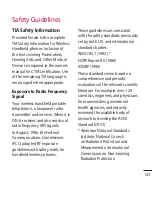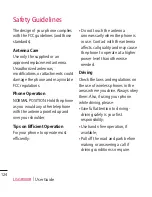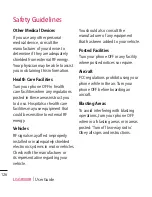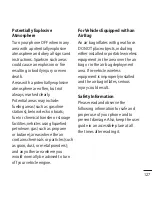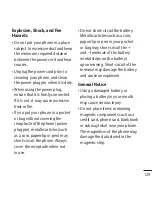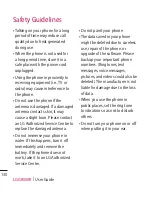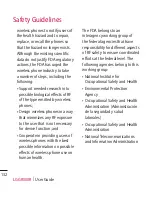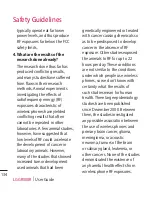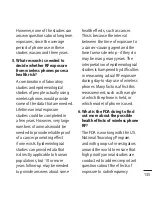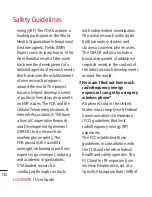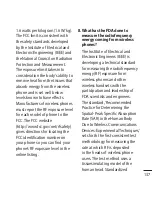
LG GR500R
| User Guide
136
energy (RF). The FDA has been a
leading participant in the World
Health Organization International
Electromagnetic Fields (EMF)
Project since its inception in 1996.
An influential result of this work
has been the development of a
detailed agenda of research needs
that has driven the establishment
of new research programs
around the world. The project
has also helped develop a series
of public information documents
on EMF issues. The FDA and the
Cellular Telecommunications &
Internet Association (CTIA) have
a formal Cooperative Research
and Development Agreement
(CRADA) to do research on
wireless phone safety. The
FDA provides the scientific
oversight, obtaining input from
experts in government, industry,
and academic organizations.
CTIAfunded research is
conducted through contracts
with independent investigators.
The initial research will include
both laboratory studies and
studies of wireless phone users.
The CRADA will also include a
broad assessment of additional
research needs in the context of
the latest research developments
around the world.
7. How can I find out how much
radiofrequency energy
exposure I can get by using my
wireless phone?
All phones sold in the United
States must comply with Federal
Communications Commission
(FCC) guidelines that limit
radiofrequency energy (RF)
exposures.
The FCC established these
guidelines in consultation with
the FDA and the other federal
health and safety agencies. The
FCC limit for RF exposure from
wireless telephones is set at a
Specific Absorption Rate (SAR) of
Safety Guidelines

